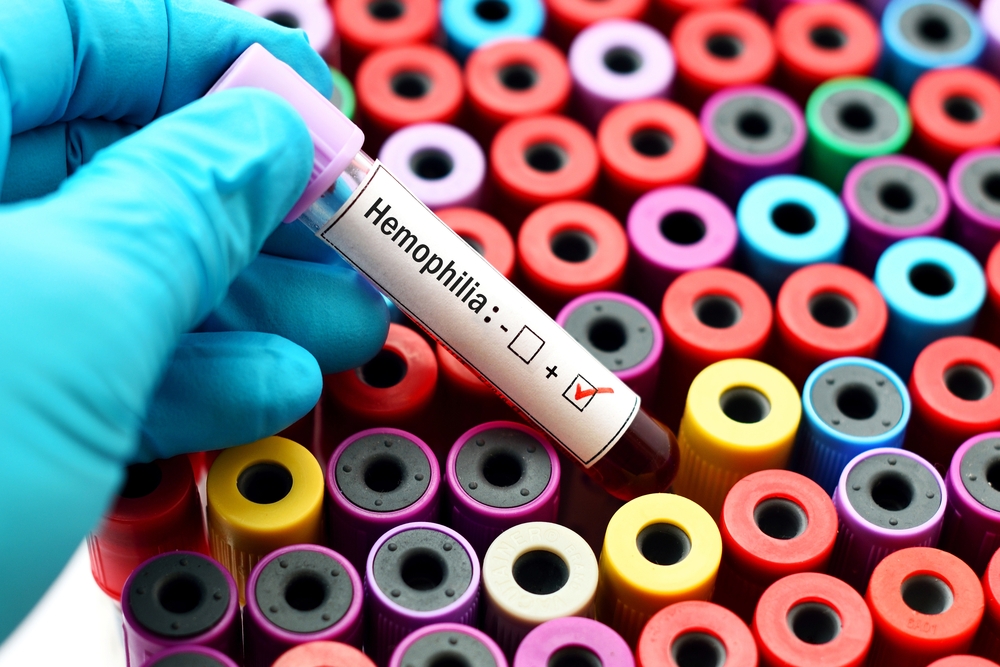Hemlibra ‘Comparable or Better’ Treatment for Hemophilia A, ICER Finds

At standard U.S. doses, Hemlibra (emicizumab) provides comparable or even superior clinical benefits than prophylactic factor VIII (FVIII) replacement therapy among adults with severe hemophilia A and no inhibitors, according to a report from the Institute for Clinical and Economic Review (ICER).
Hemlibra is also cost-saving, due to the extremely high prices of FVIII therapies and the doses at which they are used in the U.S. by these patients, the analysis found.
The experimental gene therapy Roctavian (valoctocogene roxaparvovec) could also be a more effective and cost-saving treatment, even at a price of $2.5 million, but further evidence is needed. This includes the longer term trial data required by the U.S. Food and Drug Administration and the European Medicines Agency for the therapy’s possible approval.
“Our analysis of the evidence suggests that emicizumab is comparable to or better than factor VIII prophylaxis and does save money overall,” David Rind, MD, ICER’s chief medical officer, said in a press release.
“But our report notes that this is because the prices for factor VIII, despite recombinant technologies and apparent competition in the marketplace, have not decreased, making prophylaxis with factor VIII an extremely expensive treatment required for a lifetime,” Rind added.
Hemlibra, a manufactured antibody co-marketed by Chugai Pharmaceutical and Genentech (both part of the Roche group), binds to both factor IX and factor X to mimic the action of FVIII, the clotting protein missing or defective in people with hemophilia A.
Given as an under-the-skin injection in a weekly loading dose over four weeks, followed by a maintenance dose that can be weekly or given once every two or four weeks, Hemlibra is a less burdensome treatment than FVIII prophylaxis (or preventive therapy) suggesting a higher treatment adherence, the report stated.
“In HAVEN 4, [NCT03020160] a phase III observational study, all participants who were previously on factor VIII prophylaxis preferred emicizumab over their previous prophylaxis regimen,” it noted.
In its analysis of cost-effectiveness, ICER included data from clinical trials, prior relevant economic models, and other studies of hemophilia A.
Assessing bleeding rates and other efficacy measures, available evidence points a “high certainty” of a comparable health benefit with Hemlibra than with FVIII prophylaxis at current doses, ICER found.
A separate ICER report, reflecting Hemlibra being first approved for hemophilia A patients with inhibitors, also found the treatment to be an effective and less costly alternative to FVIII prophylaxis.
In contrast to Hemlibra, BioMarin‘s Roctavian uses an adeno-associated virus (AAV5) to deliver a working F8 gene to liver cells so that FVIII production is restored.
After a preliminary draft received input from patient groups, clinicians, and others, ICER deemed that Roctavian provides clear benefits based on available data, but a definitive appraisal was not possible due to limited information on long-term outcomes. Specifically, the durability of Roctavian’s benefits and whether it can lead to liver disease are among the factors warranting more information.
Patients could also develop antibodies against AAV5, and may not be able to take more effective future gene therapies, or use treatments or vaccines for cancer or infectious diseases, the report stated.
In fact, the hemophilia community has expressed concern that low-level inflammation related to the AAV5 virus could cause the long-term liver damage sometimes seen in chronic hepatitis C infection, and that this effect might take years to show up, according to the report.
Regulatory authorities in the U.S. and the European Union requested longer-term data from the Phase 3 GENEr8-1 trial (NCT03370913) before considering to approve the gene therapy.
As Roctavian’s potential cost is not yet known, ICER used a “placeholder” cost of $2.5 million to estimate its cost effectiveness. At this price, Roctavian would be more effective and less expensive than FVIII for adults with hemophilia A without inhibitors at current doses.
Roctavian and Hemlibra have not been directly compared through head-to-head clinical trials. Without that information, ICER says that there is “insufficient” evidence to compare the two treatments in this patient population.
ICER will review its full evidence report at a virtual public meeting of the New England Comparative Effectiveness Public Advisory Council (New England CEPAC) to be held on Oct. 30. New England CEPAC includes evidence experts, clinicians working in hemophilia, methodologists, and leaders in patient engagement and advocacy.
“We look forward to our public meeting at which all stakeholders can discuss the tensions created by the pricing of factor VIII options, and the extent to which the high costs for prophylaxis should drive considerations of fair pricing for treatments like emicizumab [Hemlibra] and the gene therapies that will hopefully soon be available,” Rind added.






